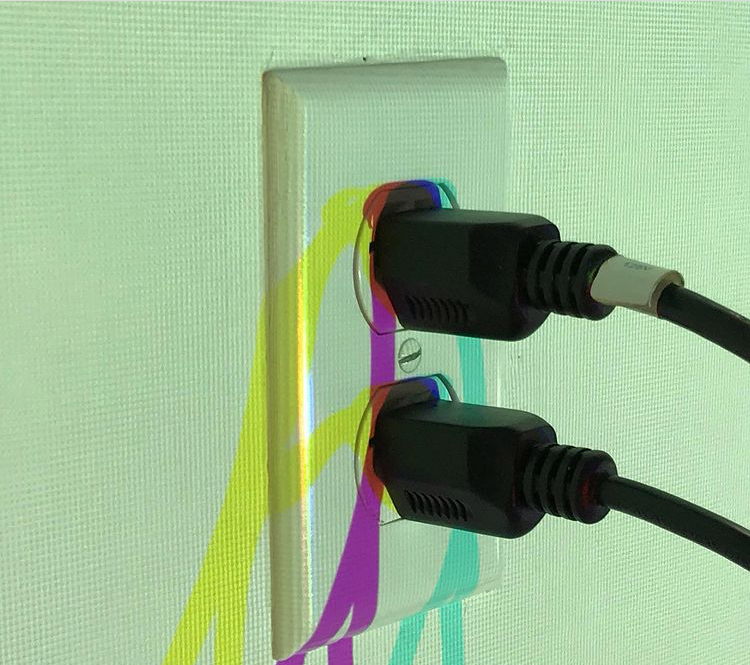~BLINN and LAMBERT / CMYK
as surely as . . night follows day,
light . . follows glass.
or: ‘light’ . . as the artists’ medium.
BLINN and Lambert . . . NICHOLAS STEINDORF & KYLE WILLIAMS
‘CMYK’, NOV 2020 / studio photo.
Photo: via Instagram @blinn_and_lambert
CMYK: Cyan-Magenta-Yellow-Black
“if printers are using a digital printing method, they would print color on paper using CMYK colors. This is a 4 color mode that utilizes the colors cyan, magenta, yellow, & black . . in various amounts to create all of the necessary colors when printing images. It is subtractive process, which means that each additional unique color means more light is removed, or absorbed, to create colors.
When the first 3 colors are added together, the result is not pure black, but rather a very dark brown.
The K color, or black, is used to completely remove light from the printed picture, which is why the eye perceives the color as black.”
RGB on the other-hand . . “is the color scheme that is associated with electronic displays, such as CRT, LCD monitors, digital cameras and scanners. It is an additive type of color mode that combines the primary colors red, green, and blue, in various degrees to create a variety of different colors. When all 3 of the colors are combined and displayed to their full extent, the result is pure white. When all 3 colors are combined to the lowest degree, or value, the result is black.”
source & more info: AshworthCreative.com
well . . .
apart from the obvious technical properties of ‘light’ vs ‘glass’ as art mediums . . both require decision-making / that become in effect: hands-on projects.
glass: stained glass, hand-blown glass, molded glass, melted glass, etc . . is an old old art form, with both artisanal & artistic values.
though the ‘light’ effects / being produced by the final outcome . . is dependent on exterior light sources playing on the glass surface. glass artworks are absolute tangible, but their light reflections and colors, . . are ambient / and very much dependent on where they are being displayed, and how they have been made . . . and most importantly: as to whether natural or artificial light is animating their surface, and of course, the degree of transparency with which the piece has been made.
using ‘light’ as your medium of expression is an ultra-contemporary art form, dependent on technical, and digital knowledge.
it usually requires darkened rooms, projection, and often computerized . . ‘animation’.
you can put your hand through light, but you cannot . . put your hand through glass.

